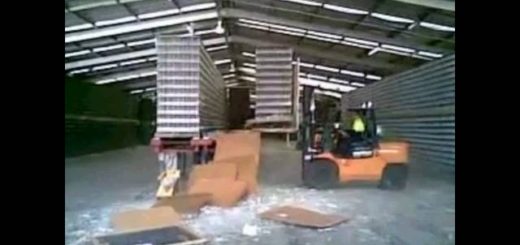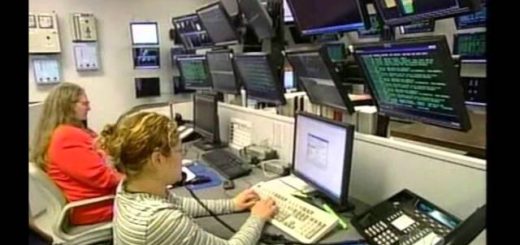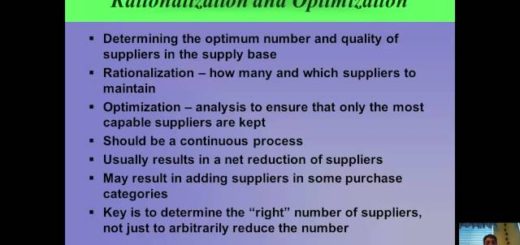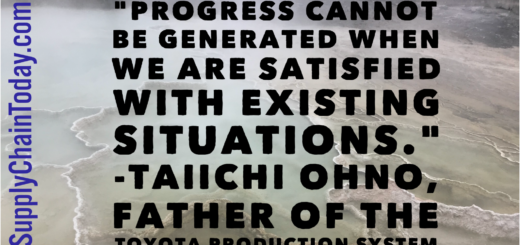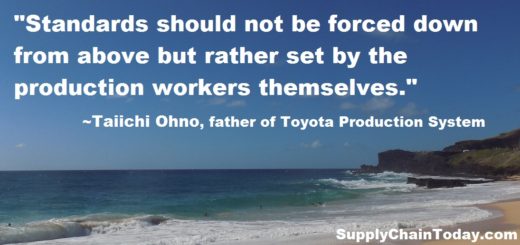Guide to the Tesla Supply Chain.
Secrets of the Tesla Supply Chain – Get the Inside Scoop!
Welcome to the Guide to the Tesla Supply Chain! This guide is designed to provide an overview of the supply chain of Tesla, Inc., a leading electric vehicle manufacturer. We will discuss the various components of the Tesla supply chain, from raw materials to finished products, and how they are managed to ensure efficient and cost-effective production. We will also explore the challenges and opportunities that Tesla faces in managing its supply chain, as well as the strategies it has implemented to ensure success. Finally, we will discuss the impact of Tesla’s supply chain on the environment and society. By the end of this guide, you will have a better understanding of the Tesla supply chain and how it contributes to the company’s success.
How Tesla Leverages Its Supply Chain to Achieve Efficiency and Cost Savings
Tesla is a leader in the electric vehicle industry, and its success is largely due to its efficient and cost-effective supply chain. Tesla has implemented a number of strategies to leverage its supply chain to achieve efficiency and cost savings.
First, Tesla has adopted a vertical integration strategy. This means that Tesla is involved in every step of the production process, from the sourcing of raw materials to the assembly of the final product. By controlling the entire supply chain, Tesla is able to reduce costs and ensure quality control. Additionally, Tesla has invested heavily in automation and robotics to streamline the production process. This has allowed Tesla to reduce labor costs and increase efficiency.
Second, Tesla has implemented a just-in-time inventory system. This system allows Tesla to order parts and materials only when they are needed, reducing the amount of inventory that needs to be stored. This reduces storage costs and ensures that parts and materials are always available when needed.
Third, Tesla has developed strong relationships with its suppliers. By working closely with its suppliers, Tesla is able to negotiate better prices and ensure that parts and materials are delivered on time. This helps Tesla to reduce costs and maintain a reliable supply chain.
Finally, Tesla has invested in advanced analytics and data-driven decision making. This allows Tesla to track and analyze its supply chain in real time, allowing it to identify areas of inefficiency and make adjustments as needed. This helps Tesla to reduce costs and ensure that its supply chain is running as efficiently as possible.
Overall, Tesla has implemented a number of strategies to leverage its supply chain to achieve efficiency and cost savings. By controlling the entire production process, investing in automation and robotics, implementing a just-in-time inventory system, developing strong relationships with suppliers, and utilizing advanced analytics, Tesla has been able to reduce costs and ensure a reliable supply chain.
Exploring Tesla’s Innovative Supply Chain Strategies
Tesla is a leader in the automotive industry, and its innovative supply chain strategies have been a major factor in its success. Tesla has implemented a number of strategies to optimize its supply chain, including the use of advanced technology, strategic partnerships, and a focus on sustainability.
To ensure the efficient delivery of parts and components, Tesla has invested heavily in advanced technology. The company has developed a sophisticated supply chain management system that allows it to track and monitor the flow of materials from suppliers to its factories. This system enables Tesla to identify potential problems and take corrective action quickly. Additionally, Tesla has implemented a 3D printing system that allows it to quickly produce parts and components on demand.
Tesla has also formed strategic partnerships with suppliers to ensure the timely delivery of parts and components. The company has established long-term relationships with suppliers to ensure that they can meet its production needs. Additionally, Tesla has implemented a just-in-time inventory system that allows it to reduce the amount of inventory it needs to keep on hand.
Finally, Tesla has made sustainability a priority in its supply chain. The company has implemented a number of initiatives to reduce its environmental impact, including the use of renewable energy sources, the use of recycled materials, and the implementation of energy-efficient processes. Additionally, Tesla has partnered with suppliers to ensure that they are using sustainable practices.
Tesla’s innovative supply chain strategies have enabled it to become a leader in the automotive industry. By investing in advanced technology, forming strategic partnerships, and focusing on sustainability, Tesla has been able to optimize its supply chain and ensure the efficient delivery of parts and components.
The Benefits of Tesla’s Automated Supply Chain Management
Tesla’s automated supply chain management system has revolutionized the way businesses manage their supply chains. By leveraging the power of automation, Tesla has been able to streamline its supply chain operations, resulting in improved efficiency, cost savings, and customer satisfaction.
One of the primary benefits of Tesla’s automated supply chain management system is improved efficiency. Automation eliminates the need for manual processes, which can be time-consuming and prone to errors. Automation also allows for faster response times, as orders can be processed and shipped quickly. This improved efficiency leads to cost savings, as fewer resources are needed to manage the supply chain.
Another benefit of Tesla’s automated supply chain management system is improved customer satisfaction. Automation allows for faster order processing and delivery, which leads to improved customer satisfaction. Automation also allows for better tracking of orders, which can help customers stay informed about their orders and ensure that they receive their products on time.
Finally, Tesla’s automated supply chain management system allows for better inventory management. Automation allows for better tracking of inventory levels, which can help businesses avoid stockouts and ensure that they have the right products in the right quantities at the right time. This improved inventory management can lead to cost savings, as businesses can avoid overstocking and understocking.
In conclusion, Tesla’s automated supply chain management system has revolutionized the way businesses manage their supply chains. By leveraging the power of automation, Tesla has been able to streamline its supply chain operations, resulting in improved efficiency, cost savings, and customer satisfaction.
How Tesla Uses Big Data to Optimize Its Supply Chain
Tesla is a leader in the automotive industry, and its success is largely due to its innovative use of big data to optimize its supply chain. By leveraging data from its vehicles, Tesla is able to identify areas of improvement and make changes to its supply chain that result in increased efficiency and cost savings.
Tesla collects data from its vehicles in real-time, allowing it to monitor the performance of its supply chain. This data includes information on vehicle performance, customer feedback, and supply chain metrics. By analyzing this data, Tesla can identify areas of improvement and make changes to its supply chain accordingly. For example, Tesla can use the data to identify areas where it can reduce costs, such as by streamlining its production process or reducing the number of suppliers.
Tesla also uses big data to optimize its inventory management. By analyzing data from its vehicles, Tesla can identify which parts are in high demand and adjust its inventory accordingly. This helps Tesla ensure that it has the right parts in stock at the right time, reducing the risk of delays or shortages.
Finally, Tesla uses big data to improve its customer service. By analyzing customer feedback, Tesla can identify areas where it can improve its customer service and make changes accordingly. This helps Tesla ensure that its customers are satisfied with their experience and that they continue to purchase Tesla vehicles.
Overall, Tesla’s use of big data to optimize its supply chain has been a major factor in its success. By leveraging data from its vehicles, Tesla is able to identify areas of improvement and make changes to its supply chain that result in increased efficiency and cost savings. This has allowed Tesla to remain competitive in the automotive industry and continue to grow its business.
The Impact of Tesla’s Supply Chain on the Automotive Industry
The automotive industry has been revolutionized by the emergence of Tesla and its innovative supply chain. Tesla has disrupted the traditional automotive industry by introducing a new approach to the production and distribution of vehicles. This approach has had a significant impact on the industry, from the way vehicles are manufactured to the way they are sold and serviced.
Tesla has revolutionized the manufacturing process by introducing a new approach to the production of vehicles. This approach involves the use of advanced robotics and automation to streamline the production process. This has allowed Tesla to produce vehicles faster and more efficiently than traditional automotive manufacturers. Additionally, Tesla has also implemented a direct-to-consumer sales model, which eliminates the need for dealerships and allows customers to purchase vehicles directly from the manufacturer.
Tesla has also revolutionized the way vehicles are serviced and maintained. The company has developed a network of service centers and mobile service vans that allow customers to have their vehicles serviced quickly and conveniently. Additionally, Tesla has developed a suite of software tools that allow customers to monitor their vehicles remotely and diagnose any issues that may arise.
Finally, Tesla has also revolutionized the way vehicles are distributed. The company has developed a network of charging stations that allow customers to charge their vehicles quickly and conveniently. Additionally, Tesla has developed a network of service centers and mobile service vans that allow customers to have their vehicles serviced quickly and conveniently.
In conclusion, Tesla’s innovative supply chain has had a significant impact on the automotive industry. The company has revolutionized the way vehicles are manufactured, sold, serviced, and distributed. This has allowed Tesla to become a major player in the automotive industry and has forced traditional automotive manufacturers to adapt to the changing landscape.
Analyzing Tesla’s Supply Chain Performance Metrics
Tesla is a leader in the electric vehicle industry, and its supply chain performance metrics are a key indicator of its success. To understand how Tesla is performing, it is important to look at the various metrics that measure its supply chain performance. These metrics include inventory turns, on-time delivery, supplier quality, and cost of goods sold.
Inventory turns measure how quickly a company is able to move its inventory. Tesla has achieved a high inventory turn rate, which indicates that it is able to quickly move its inventory and meet customer demand. This is important for Tesla, as it allows them to keep their costs low and maximize their profits.
On-time delivery is another important metric for Tesla. This measures how often Tesla is able to deliver its products on time. Tesla has achieved a high on-time delivery rate, which indicates that it is able to meet customer expectations and keep its customers satisfied.
Supplier quality is also an important metric for Tesla. This measures the quality of the parts and components that Tesla receives from its suppliers. Tesla has achieved a high supplier quality rating, which indicates that it is able to source high-quality parts and components for its vehicles.
Finally, cost of goods sold is an important metric for Tesla. This measures the cost of the parts and components that Tesla uses to build its vehicles. Tesla has achieved a low cost of goods sold, which indicates that it is able to keep its costs low and maximize its profits.
Overall, Tesla has achieved high performance metrics in its supply chain. This indicates that it is able to quickly move its inventory, deliver its products on time, source high-quality parts and components, and keep its costs low. These metrics are key indicators of Tesla’s success in the electric vehicle industry.
Exploring the Benefits of Tesla’s Global Supply Chain Network
Tesla’s global supply chain network is a powerful tool that has enabled the company to become a leader in the electric vehicle industry. By leveraging its expansive network of suppliers, Tesla has been able to reduce costs, increase efficiency, and improve the quality of its products. In this article, we will explore the benefits of Tesla’s global supply chain network and how it has helped the company become a leader in the industry.
One of the primary benefits of Tesla’s global supply chain network is cost savings. By leveraging its expansive network of suppliers, Tesla has been able to reduce costs associated with production and distribution. This cost savings has enabled the company to offer competitively priced products and remain profitable. Additionally, Tesla’s global supply chain network has enabled the company to reduce lead times and increase efficiency. By having access to a wide range of suppliers, Tesla has been able to quickly source components and materials, allowing for faster production and delivery of its products.
Another benefit of Tesla’s global supply chain network is improved product quality. By having access to a wide range of suppliers, Tesla has been able to source components and materials of the highest quality. This has enabled the company to produce products that are reliable and of the highest quality. Additionally, Tesla’s global supply chain network has enabled the company to quickly respond to customer needs and demands. By having access to a wide range of suppliers, Tesla has been able to quickly source components and materials, allowing for faster production and delivery of its products.
Finally, Tesla’s global supply chain network has enabled the company to remain competitive in the industry. By leveraging its expansive network of suppliers, Tesla has been able to reduce costs associated with production and distribution. This cost savings has enabled the company to offer competitively priced products and remain profitable. Additionally, Tesla’s global supply chain network has enabled the company to quickly respond to customer needs and demands.
In conclusion, Tesla’s global supply chain network is a powerful tool that has enabled the company to become a leader in the electric vehicle industry. By leveraging its expansive network of suppliers, Tesla has been able to reduce costs, increase efficiency, and improve the quality of its products. Additionally, Tesla’s global supply chain network has enabled the company to remain competitive in the industry.
Conclusion
The Tesla Supply Chain is a complex and ever-evolving system that requires careful management and oversight. It is essential for Tesla to have a well-defined and efficient supply chain in order to ensure the timely delivery of its products and services. By understanding the various components of the Tesla Supply Chain, companies can better manage their own supply chains and ensure that they are able to meet customer demands. With the right strategies and tools, companies can ensure that their supply chains are efficient and cost-effective.
Tesla and EV Resources
- Cracking the EV Battery Supply Chain Code.
- Elon Musk Quotes.
- First Drive on Tesla Full Self-Driving Beta.
- How Self-Driving Trucks Really Work – Future Of Work.
- How Tesla Builds Its Factories So Quickly.
- Logistics Tesla Empire Worth Trillions.
- Pepsi Reveals Tesla Semi Efficiency is Better Than Official Claims.
- Quotes and Training about Self-Driving Cars.
- Supply chain Animated – Tesla.
- Supply Chain Today: Supply Chain Research, News, and Training.
- Take a tour inside the Nevada Tesla Gigafactory.
- Tesla Builds Batteries So Fast.
- Tesla Global Supply Chain.
- The Real Reason Tesla Overcame The Chip Shortage Crisis!
- This is Elon Musk’s key to Tesla’s future: GIGAFACTORY
- Walmart using AI to streamline organization.



